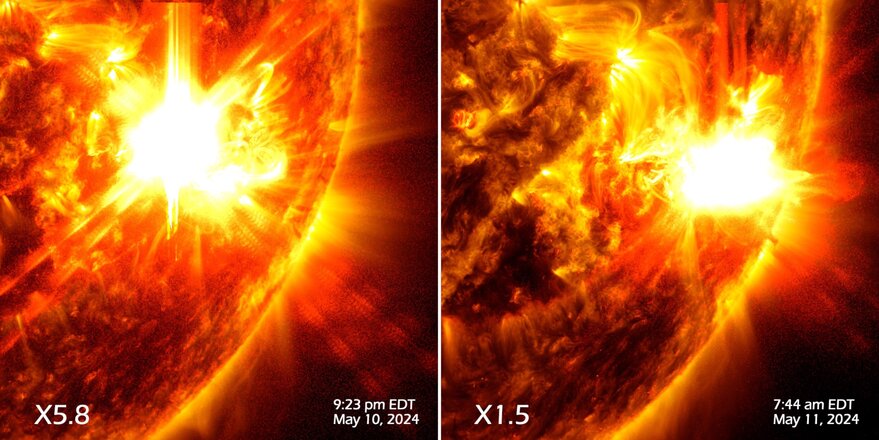SAN FRANCISCO — The University of New Hampshire, Durham, will build sensors to study solar winds under a $24.3 million contract announced Oct. 24.
The Solar Wind Plasma Sensor contract, awarded by NASA on behalf of the National Oceanic and Atmospheric Administration, covers two instruments for the Lagrange 1 Series project, part of NOAA’s Space Weather Next Program. Through the Space Weather Next Program, NOAA seeks ongoing access to coronal imagery and solar wind measurements.
The University of New Hampshire will develop and build two sensors to study the Sun’s supersonic flow of hot plasma. The sensors are scheduled for launch in 2029 and 2032.Data collected by the sensors “will support the nation’s efforts to better understand space weather around Earth and to provide warnings about impacts such as radio and GPS interruptions from solar storms,” according to the news release. Over approximately nine years, the University of New Hampshire, Durham, will work with subcontractor Johns Hopkins Applied Physics Laboratory of Laurel, Maryland, to design, analyze, develop, fabricate, integrate, test, verify and evaluate the sensors, support their launch, supply and maintain the ground equipment, and support post-launch mission operations at the NOAA Satellite Operations Facility in Suitland, Maryland.NOAA’s Space Weather Prediction Center will ingest data from the Solar Wind Plasma Sensors to characterize coronal mass ejections, interplanetary shocks and high-speed flows associated with coronal holes.NOAA and NASA will oversee the development, launch, testing and operation of Lagrange 1 Series satellites. NOAA will provide funding and manage the program. NASA will work with commercial and academic partners to develop, build and launch the instruments and spacecraft.
